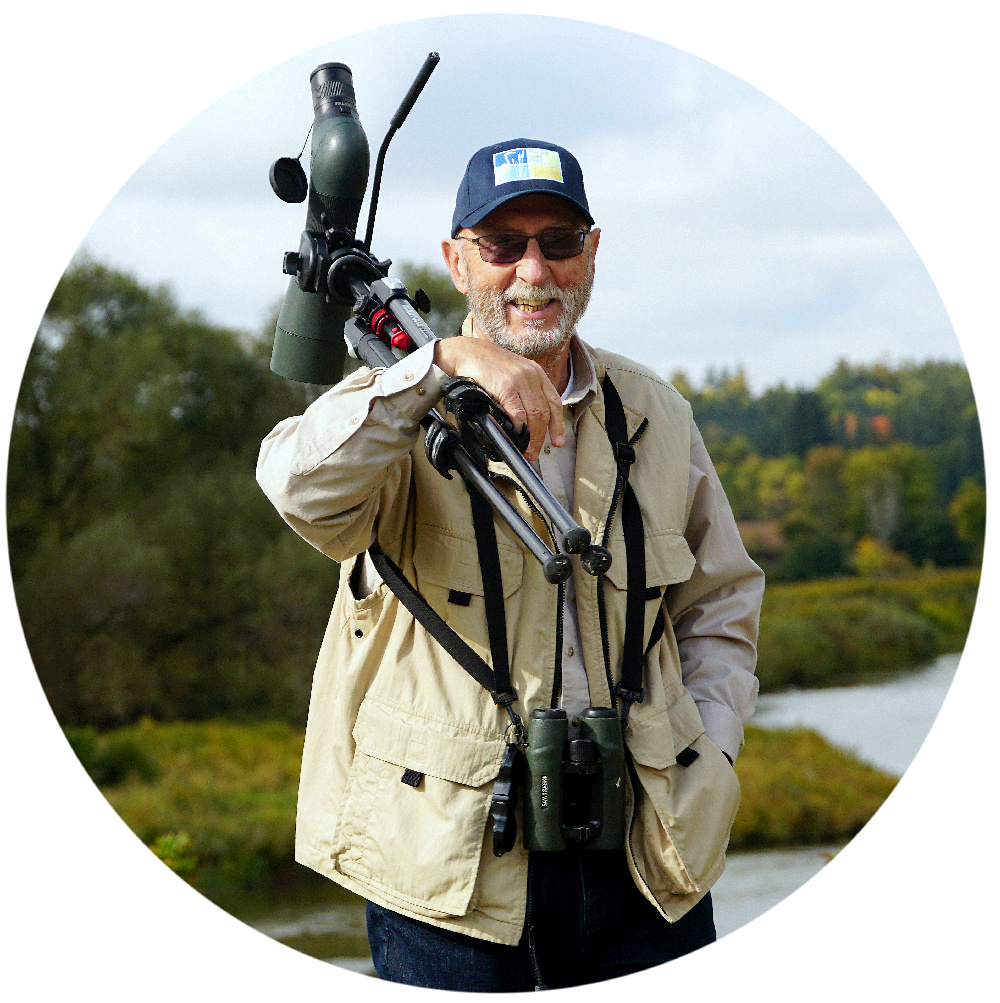







Trip Report
Carden Plain, Ontario
5 June, 2010
David M. Gascoigne, Miriam Bauman and John Lichty
We picked up John at 06:00h and headed off under cloudy skies. The weather forecast called for mixed sun and cloud, with perhaps the odd rain shower, but all in all it didn’t seem like a bad day to go birding.
Carden Plain is a limestone alvar about an hour and a half drive northeast of Toronto. It has a unique range of flora and a rich variety of bird life. Species which are difficult to locate elsewhere can often be readily observed at Carden Plain and the area has become a veritable magnet for birders. In fact, it is becoming conventional wisdom that you go to Point Pelee in May and to Carden Plain in June.
A small population of Loggerhead Shrike, Lanius ludovicianus migrans, continues to maintain a precarious hold at Carden Plain, and this is one of the species that holds a special attraction for birders.
We made good time and experienced no delays anywhere. We took a less than direct route so that we could swing by my old house in Woodville to check for Bobolinks in the neighbouring field. It was exhilarating to find that the farmer still delays cutting his hay until the Bobolinks have raised their young, and we were treated to the spectacle of numerous individuals flying around uttering their wonderful song. A displaying Eastern Meadowlark, a species whose numbers seem to have declined in recent years, added to the magic of the moment and we already felt that we had enjoyed a good day of birding.
In days gone by a stop at the Kirkfield lift lock would always yield Cliff Swallows but there were none present today. These birds used to build their nests on the walls of the structure, but a few years ago I noticed that they were unable to attach their nests, leaving me to wonder whether a coating had been applied to prevent the birds from nesting.
We left the locks and headed north to Carden Plain. In short order, we were thrilled to hear the winnowing of Wilson’s Snipe, and it seemed that at every angle we inclined our necks there were birds in view. Some swooped low over our heads, their tails fanned to create the unique sound that so readily identifies them. We had great looks at many birds as they plummeted to the ground. One perched on a fence post but before we could get it in the scope it had taken off again. Several Upland Sandpipers were spotted and a couple of these sat atop posts for extended periods, as though to pose for photographs.
There were numbers of Eastern Bluebird, Eastern Meadowlark, Bobolink, Eastern Kingbird, Savannah Sparrow and other common species, and we were elated to see four Sandhill Cranes flying overhead.
Before moving farther along Wylie Road we saw our only Vesper Sparrow of the day. Stopping just before the marsh, we heard the bouncing ball song of Field Sparrow as we got out of the car and soon located American Redstart and Chestnut-sided Warbler. We saw first the male and then the female redstart, and Miriam’s keen eyes spotted the female building a nest.
At the marsh we located several Marsh Wrens and a possible Sedge Wren, but since I was the only one to see it and even then for the briefest of moments, we decided not to include it for the day. It would have been a lifer for John and a North American first for Miriam.
The wichety-wichety call of the Common Yellowthroat seemed to be coming from every stand of reeds, but we didn’t actually catch a glimpse of one until we stopped at the marsh on the way back.
Through the grassland area there were numerous sparrows and John spotted a single Sandhill Crane in deep grass in a field off in the distance. We were able to scope this bird for as long as we cared to; a great sighting at any time.
A mud puddle on the road was very productive and we netted Eastern Towhee, Chipping Sparrow, Brown Thrashers were off to the side and a Black-billed Cuckoo perched in a nearby snag.
For many years there has been an uneasy truce between local landowners and birders, but a level of mutual respect has now been achieved, and there are signs requesting birders to respect the rights of private property and not invade the farmers’ land. For this reason we did not go to an area where traditionally a small colony of Clay-coloured Sparrows has existed.
The final thrill of the day was achieved when, walking back to the car at the marsh, a Virginia Rail walked right across the road in front of us.
For John, a relative newcomer to birding, it turned out to be a great day that delivered seven lifers - Virginia Rail, Common Yellowthroat, Brown Thrasher, Wilson’s Snipe, Upland Sandpiper, Eastern Meadowlark and Marsh Wren.
Our drive home was uneventful and we determined to repeat the experience next year.
All species on the drive to and from Carden Plain
Great Blue Heron
Canada Goose
Mallard
Turkey Vulture
Osprey
Red-tailed Hawk
American Kestrel
Killdeer
Ring-billed Gull
Common Pigeon
Mourning Dove
Eastern Phoebe
Eastern Kingbird
Tree Swallow
Barn Swallow
American Robin
American Crow
Common Starling
American Goldfinch
Song Sparrow
Northern Cardinal
Bobolink
Red-winged Blackbird
Eastern Meadowlark
Common Grackle
Baltimore Oriole
All species at Carden Plain
Great Blue Heron
Turkey Vulture
Sandhill Crane
Virginia Rail
Killdeer
Wilson’s Snipe
Upland Sandpiper
Mourning Dove
Black-billed Cuckoo
Northern Flicker
Eastern Kingbird
Tree Swallow
Barn Swallow
Cedar Waxwing
Marsh Wren
Grey Catbird
Brown Thrasher
Eastern Bluebird
American Robin
Blue Jay
American Crow
American Goldfinch
Yellow Warbler
Chestnut-sided Warbler
American Redstart
Common Yellowthroat
Eastern Towhee
Chipping Sparrow
Field Sparrow
Vesper Sparrow
Savannah Sparrow
Grasshopper Sparrow
Song Sparrow
White-throated Sparrow
Rose-breasted Grosbeak
Bobolink
Red-winged Blackbird
Eastern Meadowlark
Brown-headed Cowbird
Baltimore Oriole
Total Species - 51
Photographs by Miriam Bauman




















No comments:
Post a Comment